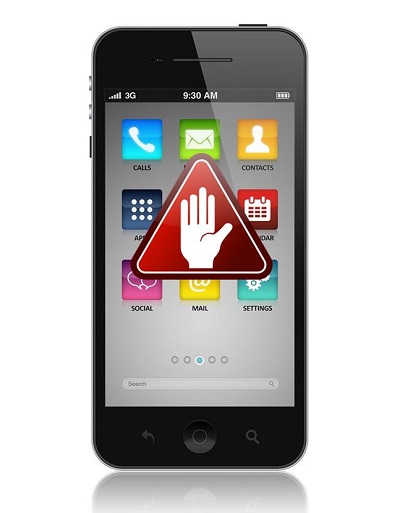Partnership with PayPal will make mobile payments possible through BBM app
BlackBerry has been struggling to compete in the mobile space for some time, but focusing into the mobile commerce space may give the company the edge it needs to engage consumers. BlackBerry has announced that it has partnered with PayPal in order to develop a method to allow BlackBerry users to send and receive money. Transactions will be conducted through BBM chats, which will be accessible to iOS and Android BBM users as well.
Beta version of app is now being tested in Canada
A beta version of the application that will be used to make transactions has already been released, but testing for Android and iOS BBM users is being limited to those living in Canada. Through the BBM app, users can use the “Send Money” icon provided by PayPal, which will allow them to transfer funds to others using the application. Funds will be passed between PayPal accounts, so users must have an authorized account before their can receive money.
BlackBerry finds challenges in working in the mobile commerce space
 BlackBerry has involved itself in the mobile commerce space in the past, but has found limited success in doing so. BBM Money was one of the first mobile payments service from the company, which allowed users to send funds to others. They could also use this service to send people pre-paid mobile credit, which could be used for a variety of purposes. BlackBerry has not found the same success in mobile commerce as other companies, such as PayPal and Google.
BlackBerry has involved itself in the mobile commerce space in the past, but has found limited success in doing so. BBM Money was one of the first mobile payments service from the company, which allowed users to send funds to others. They could also use this service to send people pre-paid mobile credit, which could be used for a variety of purposes. BlackBerry has not found the same success in mobile commerce as other companies, such as PayPal and Google.
Engaging in mobile commerce may give BlackBerry the tools it needs to compete
Companies that have begun focusing on mobile commerce have begun finding success in their favored markets. For BlackBerry, a greater focus on mobile commerce may provide the company with more momentum, allowing it to compete with both Apple and Google when it comes to the mobile payments market. BlackBerry users have been seeking mobile commerce solutions for some time, but their options have been quite limited due to the lack of support that BlackBerry devices have for mobile transactions.
This type of software has spread like wildfire among mobile device users but are stopping ads from being displayed.
The AdBlock ad blocking software and app has now reached the point that it has more than 200 million users, and it is allowing those individuals to surf the web without the invasion of excessive advertisements on their screens.
That said, the company has generated controversy by letting some advertising slip through its net, for a price.
People have been becoming frustrated with the constant barrage of popup advertisements and crowded websites and are using ad blocking apps and programs to help them to smooth out their internet usage experience. While many people realize that the advertising on websites are frequently the main source of income for a site and that it is that income that makes the free information possible, they continue to object to how much data is being collected from them and question the mobile security and convenience of the current experience. For this reason – among others – many are choosing to block these forms of marketing.
A lack of transparency in data collection has become a major driver for the use of ad blocking software.
 People simply don’t know which ads are collecting their information nor what specific data is being taken and tracked. Because of the mystery behind this data collection, many mobile device users are deciding to simply block the advertisements in a “better safe than sorry” strategy.
People simply don’t know which ads are collecting their information nor what specific data is being taken and tracked. Because of the mystery behind this data collection, many mobile device users are deciding to simply block the advertisements in a “better safe than sorry” strategy.
This type of mobile security or advertising blocking software works when a device user downloads a plug-in which can be installed into any of several different popular internet browsers.
That said, a recent report assembled by Adobe and a startup from Dublin called PageFair, have determined that this year, alone, there will be $22 billion in lost advertising revenue from ad blocking software and app usage. When compared to the previous year, that represents an increase of 41 percent. In the report, it was also shown that over one in three internet users in some countries – particularly in European nations – now have some form of advertising blocking strategy in place.
 BlackBerry has involved itself in the mobile commerce space in the past, but has found limited success in doing so. BBM Money was one of the first mobile payments service from the company, which allowed users to send funds to others. They could also use this service to send people pre-paid mobile credit, which could be used for a variety of purposes. BlackBerry has not found the same success in mobile commerce as other companies, such as PayPal and Google.
BlackBerry has involved itself in the mobile commerce space in the past, but has found limited success in doing so. BBM Money was one of the first mobile payments service from the company, which allowed users to send funds to others. They could also use this service to send people pre-paid mobile credit, which could be used for a variety of purposes. BlackBerry has not found the same success in mobile commerce as other companies, such as PayPal and Google.
 People simply don’t know which ads are collecting their information nor what specific data is being taken and tracked. Because of the mystery behind this data collection, many mobile device users are deciding to simply block the advertisements in a “better safe than sorry” strategy.
People simply don’t know which ads are collecting their information nor what specific data is being taken and tracked. Because of the mystery behind this data collection, many mobile device users are deciding to simply block the advertisements in a “better safe than sorry” strategy.